Whether you’ve always preferred cooking on gas or have your eye on the latest self-cleaning oven, with most kitchen appliances, you’ll probably already have a rough idea of what you’re looking for. However, when it comes to choosing a cooker hood, you might have one or two questions. For starters, do you even need one? What’s the difference between extraction and recirculation? And what should you do if you’re planning to fit a hob on your kitchen island? In this article, we’ll talk you through the range of options, sharing some handy advice on what to look out for. Let’s get started.
Is ventilating your kitchen necessary?
In most cases, installing a cooker hood is not a legal requirement. However, unless you’re refurbishing an existing kitchen that doesn’t currently have any extraction, you are required to install some form of ventilation. Poor air quality can be detrimental to your health and the practicality and longevity of your kitchen. Thus, at Kitchens InStyle, we would always recommend ventilating your room properly.
The fact is that cooking always produces some air pollution. This can range from water vapour to smoke and grease, all of which can cause numerous problems. If you don’t want a damp, smelly, greasy kitchen, proper ventilation is essential. Cooker hoods are specifically designed for this purpose. They remove vapour and odours from the source, thus proving the most efficient solution. And with so many styles and clever new designs available, you should be able to find something that works for you.
However, while cooker hoods offer lots of benefits, some still prefer to opt for an alternative. Provided you find a design with a high enough extraction rate, you can install a wall-mounted extractor fan like that which you might find in a bathroom. If you’re looking for something more discreet than a traditional cooker hood, these can offer a cost-effective alternative to a sleek, high-tech venting hob or ceiling extractor. Though they are unlikely to be as effective.
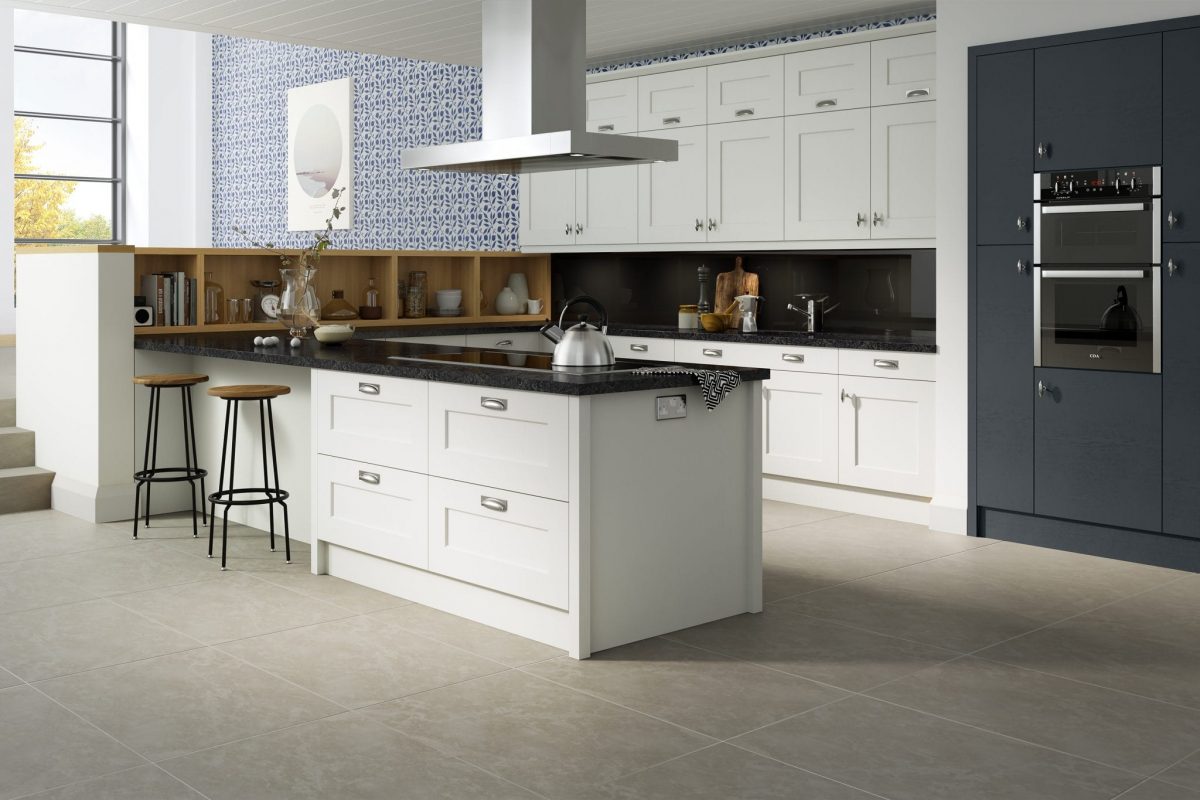
What types of cooker hoods are available?
One of the biggest differences between the various cooker hoods available is their appearance. From modern angled cooker hoods to classic, integrated extractors, there’s a design to suit every kitchen style. There is even a range of cooker hoods suitable for kitchen islands.
Chimney Cooker Hood
As the name suggests, chimney cooker hoods feature a wide canopy for the filters and a chimney to hide any ducting. They come in a range of shapes and sizes and are very versatile, working well in modern and traditional settings alike. They look great when paired with a sophisticated shaker design, adding a cool, laid-back edge. Chimney cooker hoods are very popular.
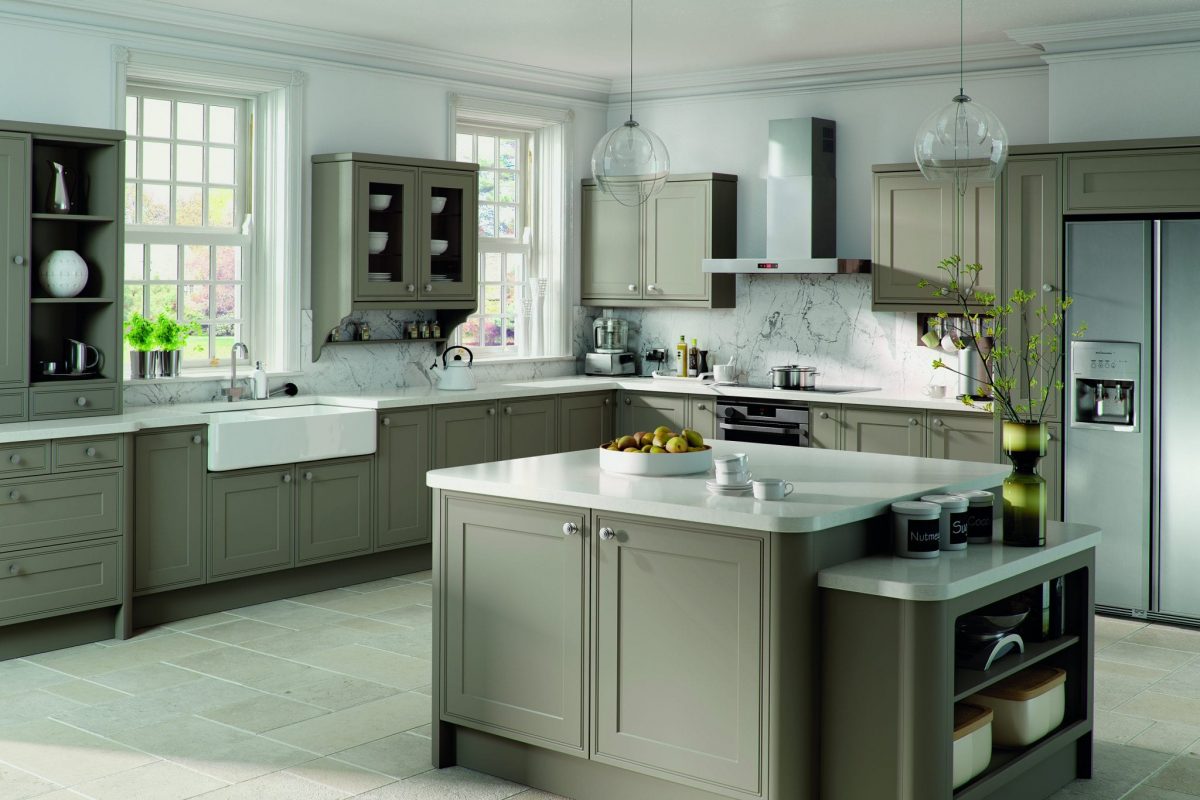
Angled Cooker Hoods
Like chimney cooker hoods, most angled extractors use boxing to conceal any ducting. However, instead of a flat filter protruding from the wall, they feature a slanted canopy which looks much more contemporary. But their stylish appearance isn’t the only benefit. Because they use perimeter extraction, they tend to be stronger and quieter than standard overhead extraction. You’re also much less lightly to bump your head!
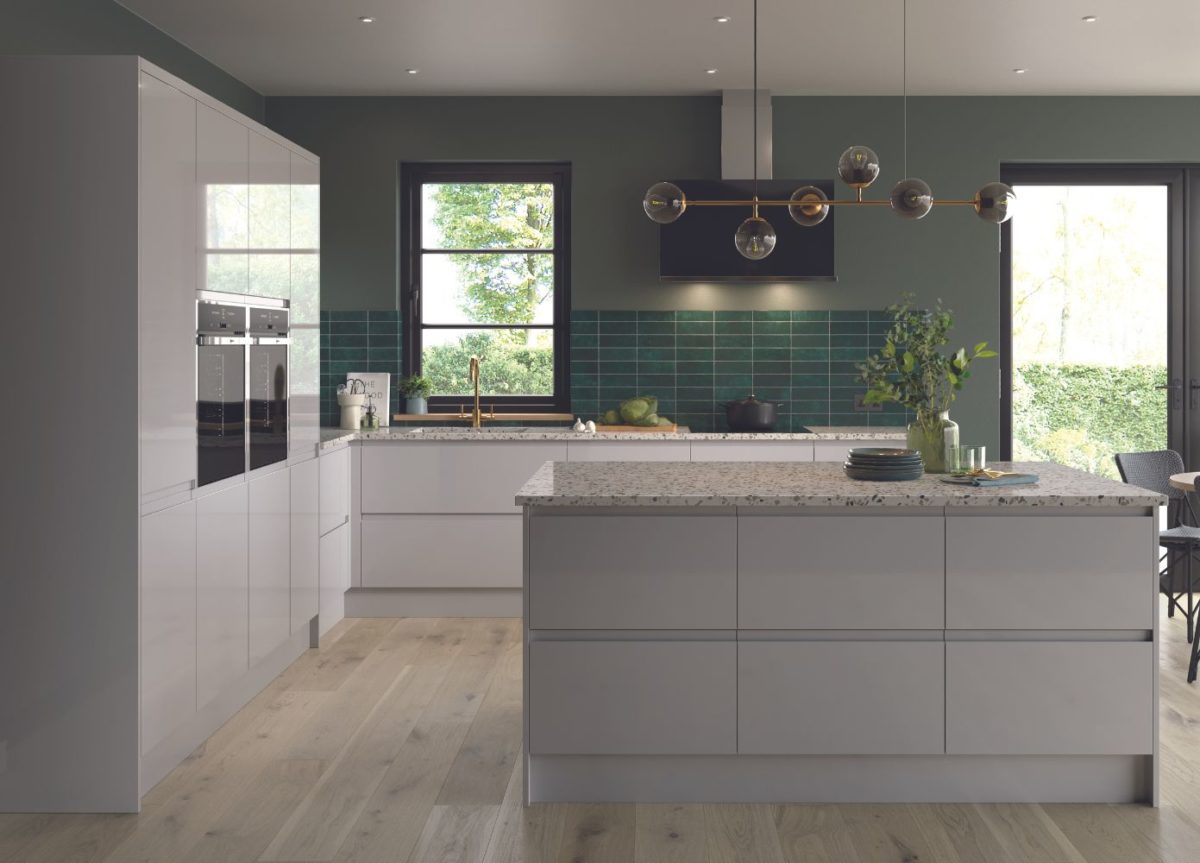
Visor Cooker Hoods
In contrast to angled and chimney cooker hoods, which can add to the look of your interior, visor cooker hoods are slightly more discreet. They are designed to fit beneath your wall unit, hiding any ducting within the cupboard. They are generally more affordable than some other extractor styles and can come in handy in a small kitchen.
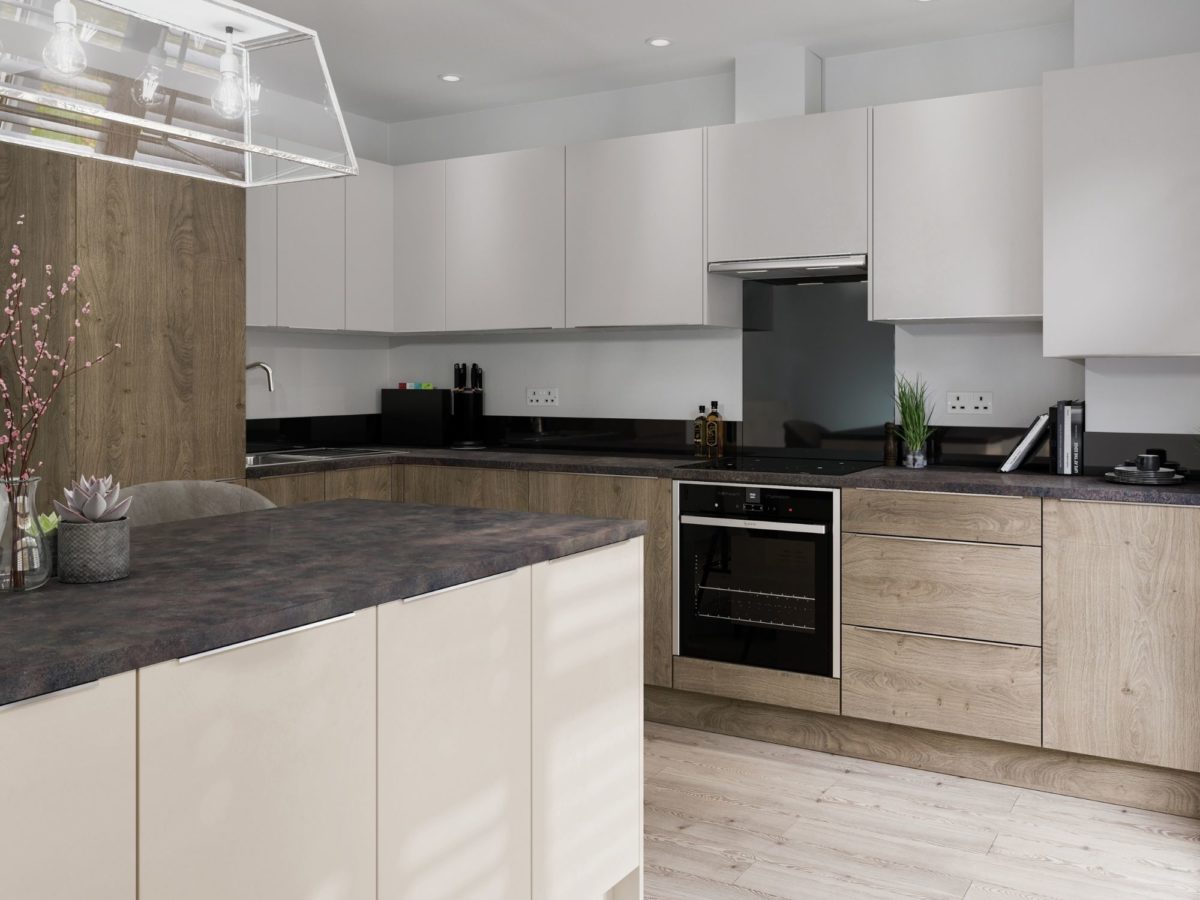
Integrated Cooker Hoods
Integrated or built-in cooker hoods are even more discreet and equally practical for small kitchens. They are built into your unit, meaning you need to pull your cabinet open to reveal and use the extractor.
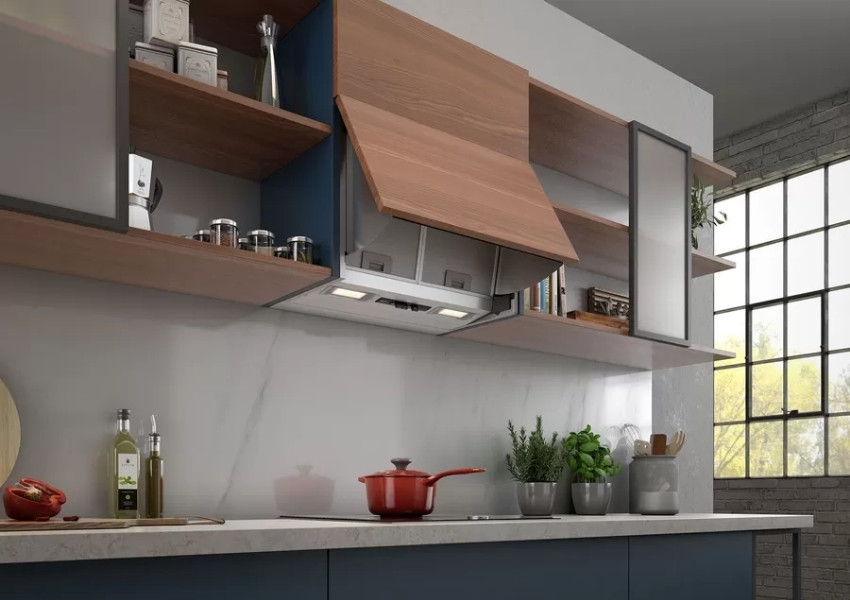
Cooker Hoods For Kitchen Islands
Of course, since all the above options must be mounted on a wall or within a kitchen unit, they are not suitable for kitchen islands. However, as kitchens have changed and become more social, appliance manufacturers have developed a host of exciting new and innovative products to complement modern living. If you are considering installing a hob on your island, there are plenty of fantastic solutions available.
Designer Cooker Hoods
Designed to look almost like a pendant light or chandelier, a designer cooker hood will undeniably make an eye-catching and stylish statement. While they can transform the atmosphere of your kitchen, the best quality models can cost a bit more than a standard cooker hood. Plus, they are only available with recirculation rather than ducted extraction. We’ll explain more about this later.
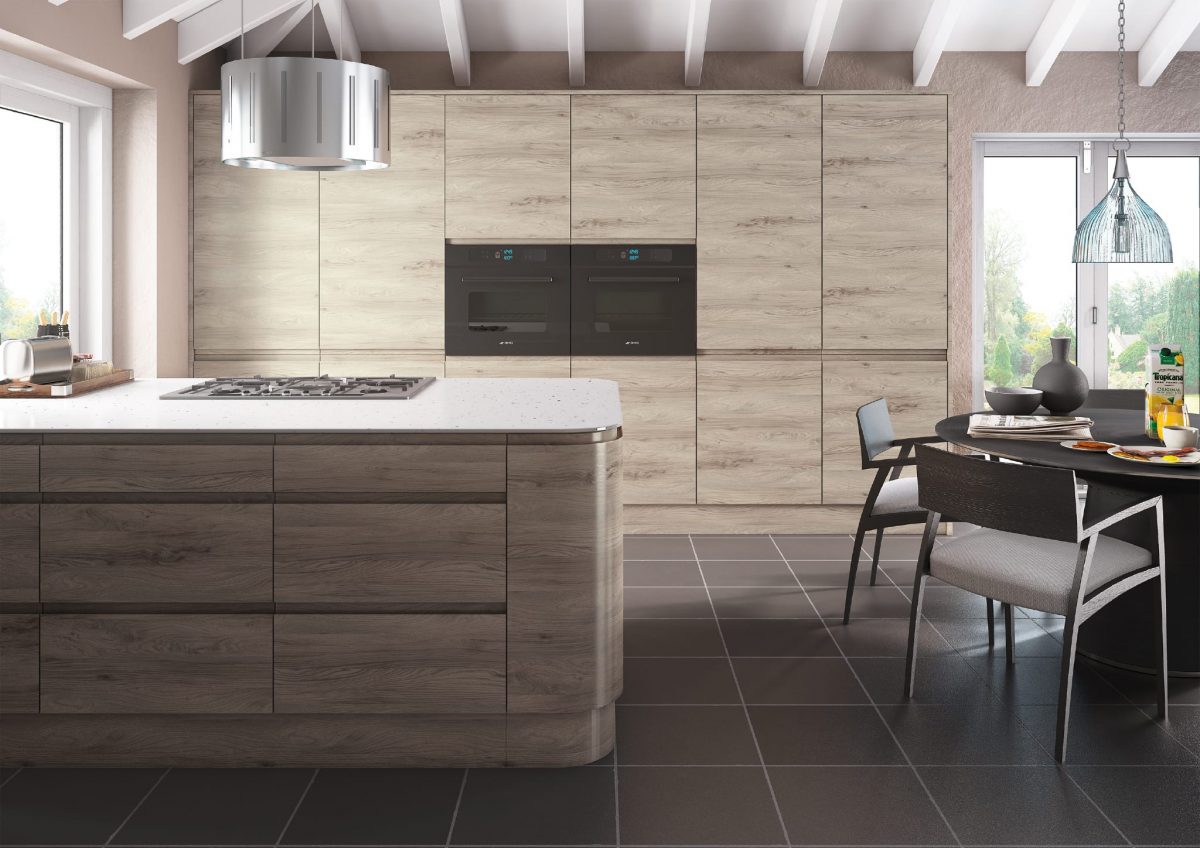
Ceiling Mounted Cooker Hoods
Ceiling hoods are great for those who prefer a more minimal finish, as they are mounted directly into the ceiling above your hob for a seamless aesthetic. They can be very effective, but there are a few things to consider. You’ll need space in the ceiling void to conceal part of the motor and the ducting. Otherwise, you’ll need to box it in or opt for recirculation. If you have very high ceilings, the cooker hood could be too far away from the source to work effectively.
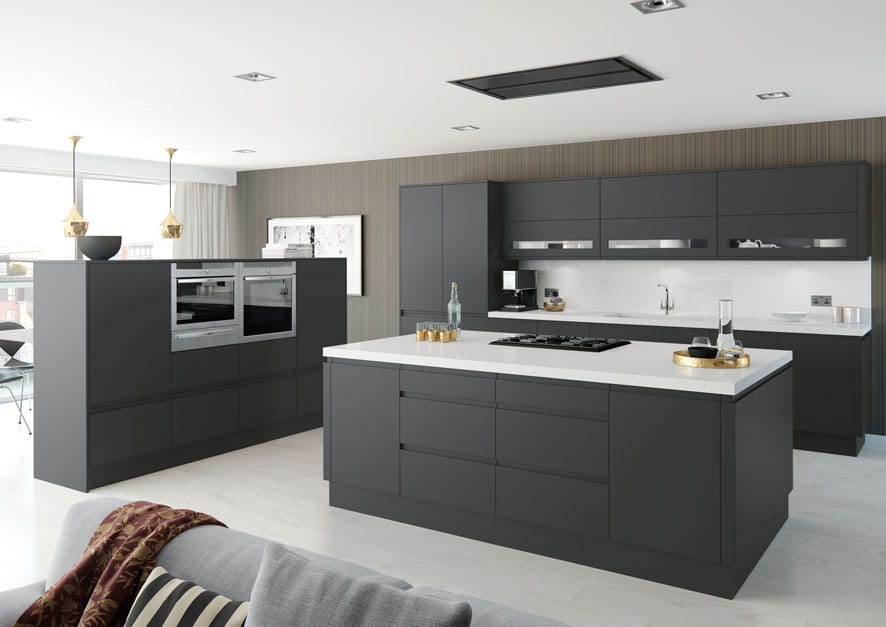
Downdraft Cooker Hoods
Downdraft cooker hoods are another great option if you’re planning to install a hob on your island. Unlike other cooker hoods, downdraft extractors are designed to sit below your worktop, rising up behind your hob when in use. This can add a great sense of theatre to your cooking. As well as looking discreet when neatly tucked away below your worktop, they are also very quiet. However, installing ducting under your floor can be tricky and costly, making recirculation models much more popular.
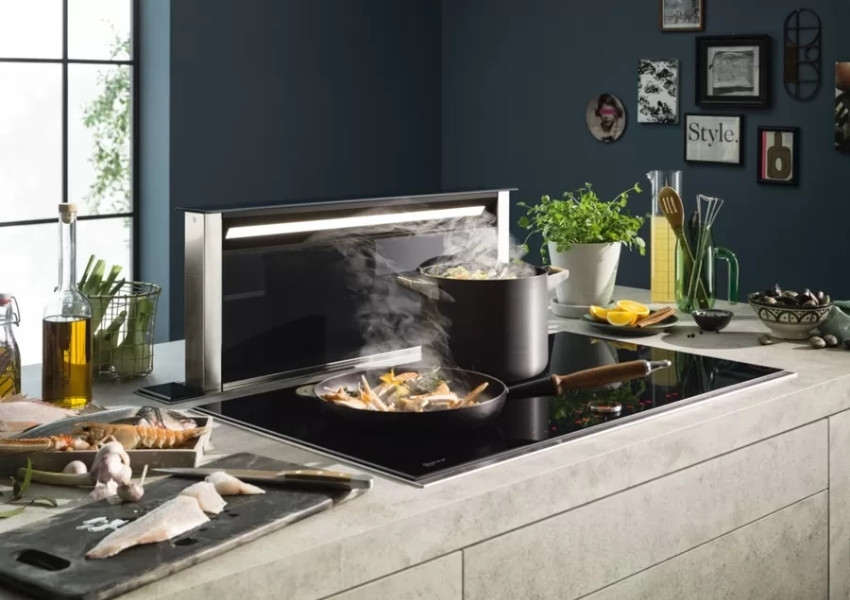
Venting Hobs
Much like downdraft cooker hoods, venting hobs also draw odours down below your worktop. However, instead of a separate hood, the hob and extractor are a single unit, with the extractor sitting in the middle of the cooking surface. Venting hobs are sleek, stylish, and very effective. They promote impressive design freedom and are ideal for anyone who enjoys socialising while cooking. Like downdraft hobs, it can be easier to opt for recirculation than trying to install ducting under your floor.
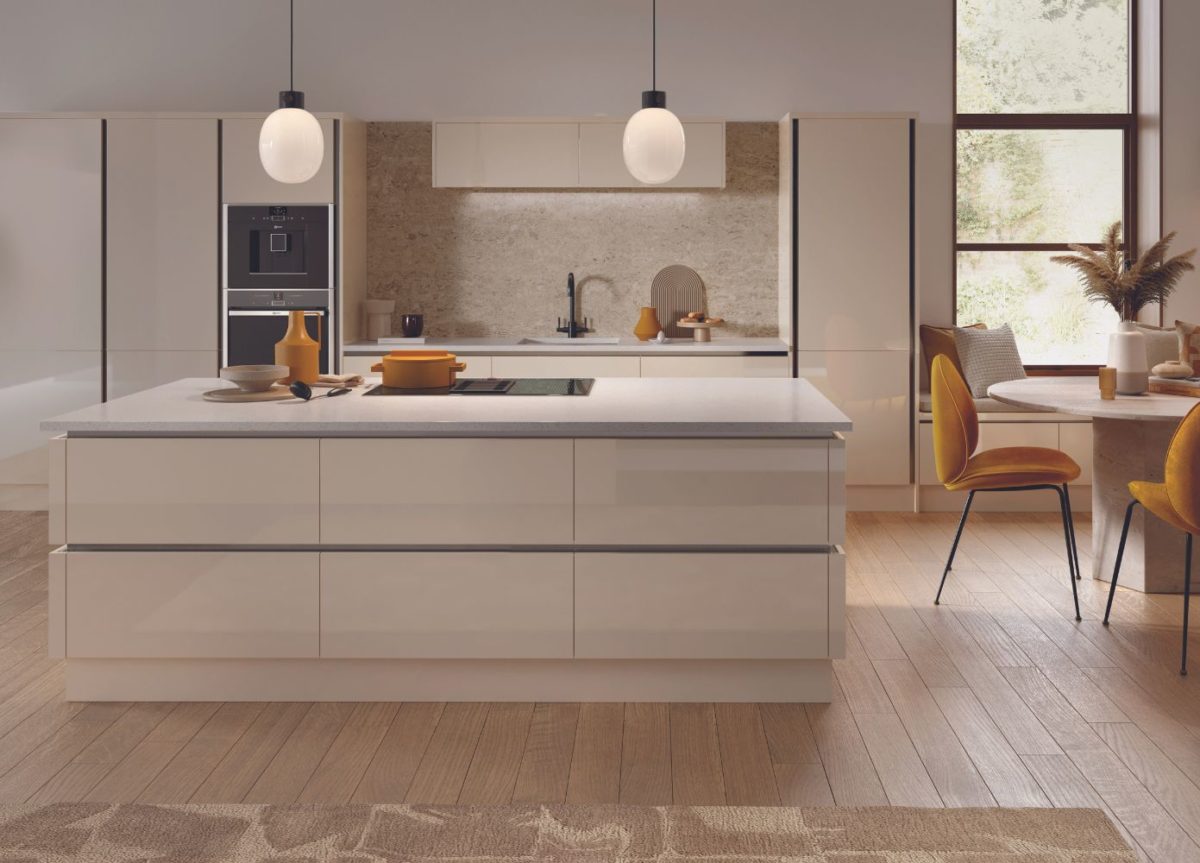
Should you choose an extraction or recirculation cooker hood?
We’ve mentioned recirculation and extraction a few times now. Thus you’ll probably be wondering what the difference is. Simply put, extraction, or ducted hoods, draw odours through a pipe, depositing them outside. Recirculation cooker hoods filter the air and release it back into the kitchen. Both have their own set of pros and cons.
Ducted/Extraction Cooker Hoods- Ducted cooker hoods deposit fumes outside, so there is no risk of any grease or smoke particles getting back into the room. Though they are generally more effective, the amount of fumes successfully removed depends on the performance of your cooker hood. Furthermore, the more powerful the extraction, the noisier your cooker hood is likely to be.
Ideally, ducted cooker hoods need to be fitted on an external wall. This limits where you can install them. Alternatively, you’ll need to find a clever and potentially costly solution to hide the ducting. The length of ducting and the number of bends can impact the effectiveness of your extractor.
Recirculation Cooker Hoods– Recirculation cooker hoods offer great design flexibility as they can be installed anywhere in your kitchen. When combined with a downdraft system or venting hob, they can also be very quiet and efficient. However, they don’t always process cooking fumes 100% effectively, meaning some particles can remain in your kitchen. As well as standard grease filters, they also use charcoal filters to purify the air. Both will need replacing from time to time.
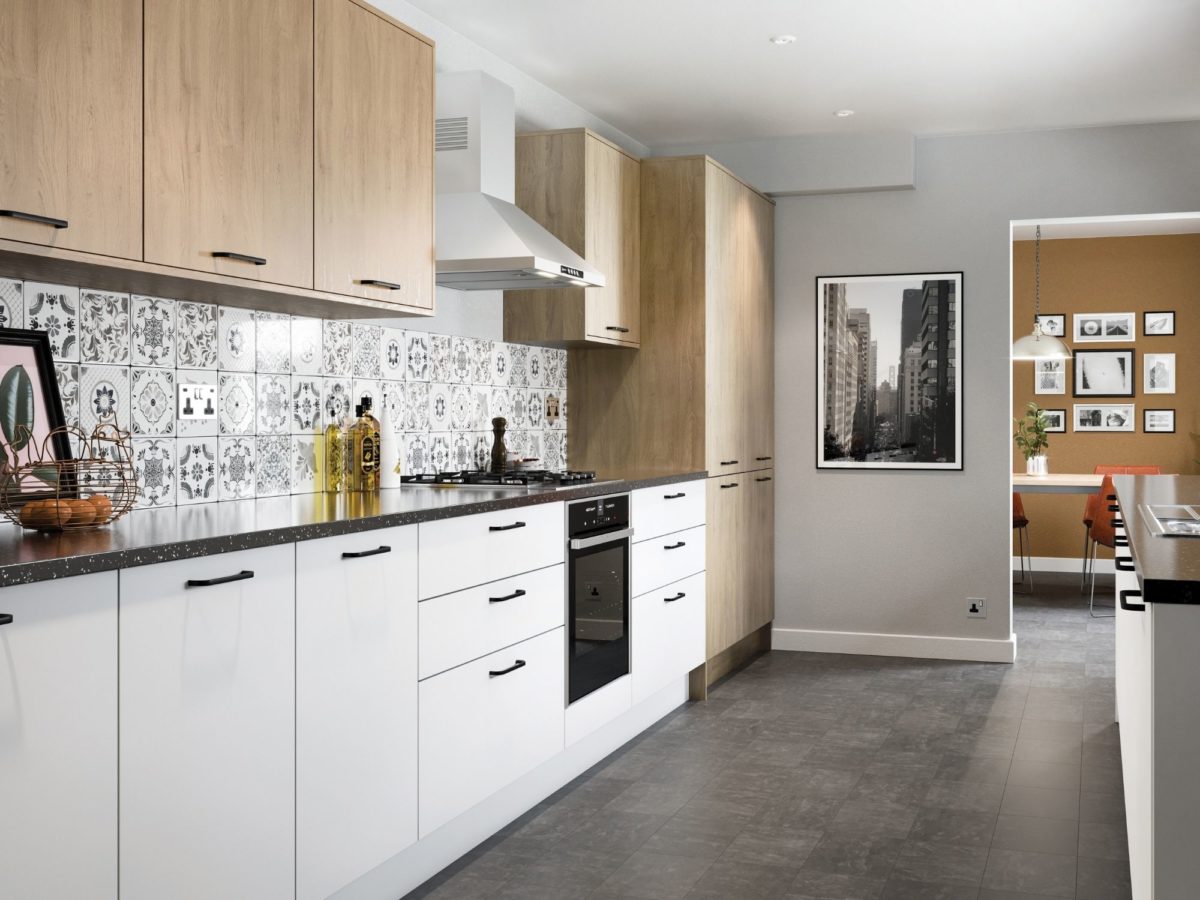
Other things to consider
The Size Of Your Cooker Hood
You’ll need to make sure your cooker hood is big enough to cover your cooking surface. It should be the same width or larger than your hob. Unless you’re opting for a designer cooker hood, in which case, this may not be possible.
The Extraction Rate
The higher the extraction rate, the more effective your cooker hood will be. However, if you have a small kitchen, you may not need an extremely powerful extractor. The extraction rate is normally shown as m3 per hour. Ideally, your cooker hood should filter the air in the room 10 times per hour. You can work out whether it will do this by dividing the extraction rate by the volume of your room. You can calculate the volume by multiplying width x height x length.
How Noisy Is Your Cooker Hood?
Whether you’re looking forward to hosting family get-togethers or simply catching up on the day’s events while getting dinner ready, a noisy extractor could potentially ruin your plans. Make sure you check your cooker hood’s decibel rating before you buy. Normal levels are around 60-70 dB. Anything higher than 60dB and you may struggle to hold a conversation.
How Easy Will It Be To Get Hold Of Replacement Parts?
Saving money and buying from a less well-known brand is all well and good until you need to buy a replacement part like a grease filter or a light bulb. You may want to check how easy it is to find replacement parts and how expensive they are. It’s also worth finding out how easy your potential cooker hood will be to clean and maintain. Sometimes replacing and cleaning filters can be a rather fiddly job.
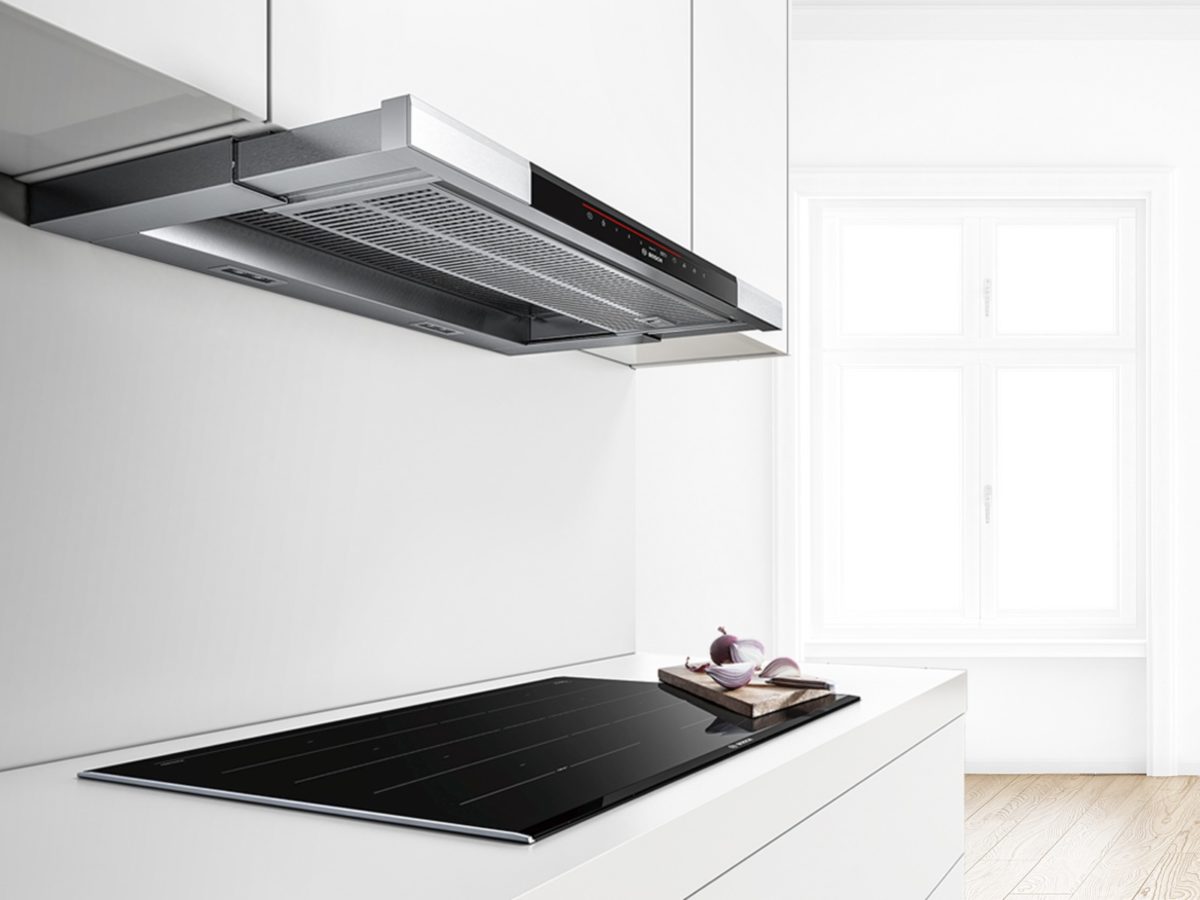
Should You Opt For A Smart Cooker Hood?
Smart kitchen technology is becoming increasingly popular and much more widely available. As well as smart ovens, washing machines, and fridges, you can also get smart cooker hoods! Smart cooker hoods offer lots of useful features. For example, rather than fiddling around to find the right setting, a smart cooker hood will turn on automatically, adjusting to the perfect level to remove the vapours produced. It will then turn off once it senses that you have finished cooking. You can also control your cooker hood using an app on your phone or tablet. The app will send you a notification when the filters need to be changed, so your extractor will always perform its best. A smart cooker hood can make balancing looking after your kitchen and your health with busy family life much easier.

Keeping your kitchen well-ventilated is not only vital to ensure you get the maximum benefit from your new space, but it can also protect your health. And, with so many different types of cooker hoods available, you’re sure to find something that elevates your design. If you would like more advice on choosing a cooker hood, please don’t hesitate to get in touch. You can call us on 02381 040013 or email [email protected].